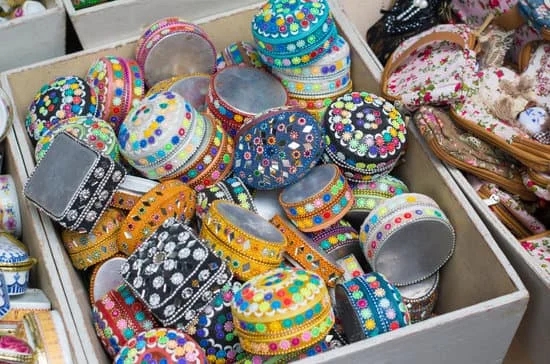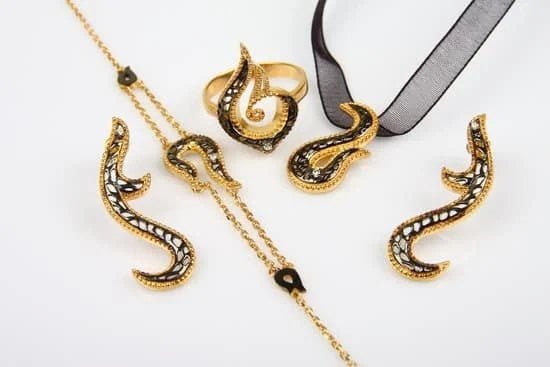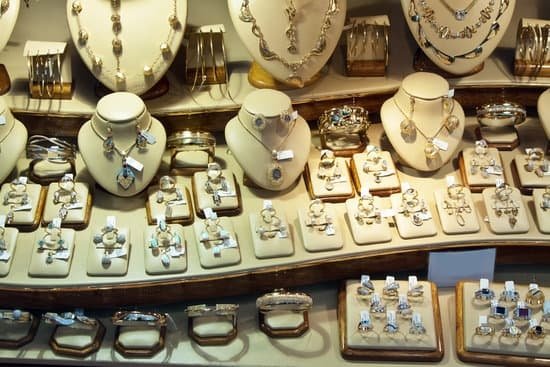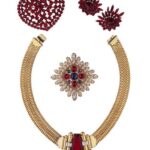Do you have a passion for jewelry making? Are you looking for a new creative outlet? Why not try making your own jewelry beads at home?
Not only is this a fun and rewarding craft, but it also allows you to create unique and personalized pieces of jewelry that reflect your individual style. In this article, we will explore the art of creating your own jewelry beads from scratch, providing you with all the information you need to get started on your beading journey.
Creating your own jewelry beads at home is not only a great way to unleash your creativity, but it also allows you to customize your designs according to your preferences. Whether you prefer dainty and delicate beads or bold and statement-making ones, the possibilities are endless when it comes to bead making. By learning the techniques and processes involved in bead making, you can elevate your DIY jewelry projects to a whole new level.
In this comprehensive guide, we will take you through each step of the bead making process – from selecting essential tools and materials, to mastering different beading techniques, exploring various bead types and shapes, incorporating colors and patterns into your creations, polishing and sealing your homemade beads, showcasing them in unique ways, troubleshooting common challenges, and more. So grab your supplies and get ready to unlock your creativity as we delve into the world of making jewelry beads at home.
Getting Started
Before you embark on your bead making journey, it’s important to gather the essential tools and materials needed for this craft. Having the right supplies will not only make the process easier, but it will also allow you to create high-quality and professional-looking beads. Here are some of the must-have items for bead making at home:
- Beading Wire or Thread: This is the foundation of your beadwork. Choose a beading wire or thread that is strong enough to hold the weight of your beads and durable enough to withstand wear and tear.
- Beading Needles: These needles are specifically designed for beading projects. They have a long, thin shape that allows them to easily pass through small bead holes. Make sure to have different sizes of needles on hand to accommodate different bead sizes.
- Pliers: Pliers are essential for shaping wire, opening and closing jump rings, and adding clasps to your jewelry pieces. Look for a set that includes round-nose pliers, chain-nose pliers, and flat-nose pliers.
- Beads: Of course, you can’t make jewelry without beads. There is a wide variety of beads available in different sizes, shapes, colors, and materials. It’s a good idea to start with basic seed beads in various colors and then gradually expand your collection as you gain more experience.
- Jewelry Findings: These are the small components that help connect different pieces of jewelry together, such as clasps, jump rings, crimp beads, ear wires, and headpins. Stock up on these findings so you have them readily available whenever you need them.
- Bead Board or Tray: A bead board or tray is extremely useful for organizing your beads and keeping them from rolling away while you work. It usually has compartments where you can sort your beads by color, shape, or size.
- Thread Conditioner: This optional tool can be applied to your thread before beadwork to prevent it from fraying and tangling. It’s particularly useful when working with delicate threads or when you want to add extra strength to your beadwork.
By having these essential tools and materials on hand, you’ll be well-equipped to start making your own jewelry beads at home. Remember, as you gain more experience and experiment with different techniques, you may find that additional tools and materials become necessary. So don’t hesitate to explore and expand your collection as you grow as a bead maker.
Selecting the Perfect Beading Techniques
When it comes to making jewelry beads at home, one of the most important aspects is selecting the right beading techniques. The right technique can greatly enhance the overall design and quality of your beads. In this comprehensive guide, we will explore some popular beading techniques that you can use to create stunning jewelry pieces.
- Stringing Technique: This is one of the most basic and commonly used beading techniques. It involves stringing beads onto a flexible material such as thread, wire, or cord. This technique is perfect for creating simple necklaces, bracelets, and anklets. It allows for flexibility in design and provides endless possibilities for combining different colors, shapes, and sizes of beads.
- Wire Wrapping Technique: This technique involves wrapping wire around beads to create unique and intricate designs. It not only adds strength and durability to your jewelry but also gives it a more professional look. Wire wrapping can be used to create various jewelry pieces such as earrings, pendants, and rings.
- Bead Embroidery Technique: This technique involves attaching beads onto fabric or other materials using needle and thread. It allows for intricate detailing and can create beautiful patterns and designs on your jewelry pieces. Bead embroidery is often used in creating statement necklaces, brooches, and embellishments on clothing.
There are many more beading techniques that you can explore depending on your skill level and personal preference. Experimenting with different techniques will help you discover new ways of creating unique designs that reflect your own style.
| Beading Techniques | Description |
|---|---|
| Stringing Technique | Involves stringing beads onto a flexible material like thread or wire. |
| Wire Wrapping Technique | Involves wrapping wire around beads to create intricate designs. |
| Bead Embroidery Technique | Involves attaching beads onto fabric or other materials using needle and thread |
Mastering Bead Types and Shapes
Understanding Different Bead Types
When it comes to jewelry making, the possibilities are endless when you start exploring different bead types and shapes. By understanding the various options available, you can create unique and eye-catching pieces that reflect your personal style. Here are some popular bead types that you can experiment with:
- Seed beads: These tiny beads are often used for intricate beadwork such as peyote stitch or loom weaving. They come in a variety of sizes, shapes, and finishes, allowing you to add texture and detail to your designs.
- Gemstone beads: Made from natural materials such as quartz, amethyst, or jade, gemstone beads bring a touch of luxury to your jewelry creations. Each gemstone has unique properties that can be incorporated into your designs for both aesthetics and meaning.
- Glass beads: Glass beads come in a wide range of colors, shapes, and finishes. Whether you prefer smooth and glossy glass or textured and frosted glass, there is a vast selection available for you to explore.
Exploring Different Bead Shapes
In addition to various bead types, experimenting with different bead shapes can add depth and visual interest to your jewelry designs. Here are some popular bead shapes that you can consider using:
- Round beads: Round beads are classic and versatile options that work well in many jewelry designs. They can be used as spacers between larger focal beads or strung together for a simple yet elegant necklace or bracelet.
- Bicone beads: These double cone-shaped beads add dimensionality and sparkle to your jewelry pieces. Bicone beads are often used in elaborate bead weaving patterns or as accents in earrings or pendants.
- Cube beads: If you’re looking for geometric-inspired designs or want to experiment with modern aesthetics, cube beads are a great choice. Their uniform shape allows for clean lines and interesting patterns.
Remember that these are just a few examples of the wide range of bead types and shapes available. Feel free to explore and experiment with different options to find the ones that resonate with you and your creative vision.
Combining Bead Types and Shapes
Once you have a good understanding of different bead types and shapes, you can start exploring how they can be combined to create intriguing designs. Mixing various bead types and shapes in a single piece can add depth, texture, and visual interest.
You can use contrasting bead types to create focal points or gradient effects within your designs. For example, combining a string of seed beads with larger gemstone beads can create an interesting contrast in size and texture.
Additionally, combining different bead shapes within a design can result in dynamic patterns and unique aesthetics. Experimenting with asymmetry or alternating between different shapes adds visual stimulation to your pieces.
Remember that when it comes to bead types and shapes, there is no strict rulebook. Allow your creativity to guide you as you explore new combinations and discover what resonates with your personal style.
Step-by-Step Bead Making Process
The process of making jewelry beads at home can be an enjoyable and rewarding experience, especially for beginners who are looking to explore their creativity. This section will provide a step-by-step guide to help beginners navigate the bead-making process with ease and confidence.
Gathering Your Materials
Before you begin the bead-making process, it is essential to gather all the necessary materials. Some of the basic tools and supplies you will need include:
- Bead molds: These are available in various shapes and sizes and can be made of silicone or metal.
- Clay: Choose a clay that is suitable for bead-making, such as polymer clay or air-dry clay.
- Rolling pin: Use a smooth rolling pin to roll out the clay evenly.
- Sculpting tools: These tools will help you shape and manipulate the clay into different bead designs.
- Sandpaper or emery boards: These are used for smoothing rough edges on your finished beads.
- Oven or kiln: Depending on the type of clay you are using, you will need either an oven or kiln for baking the beads.
The Bead-Making Process
- Prepare your workspace: Set up a clean and well-lit area where you can comfortably work on your bead-making project.
- Condition your clay: Conditioning the clay involves kneading it until it becomes soft and pliable. This helps to eliminate air bubbles and make it easier to work with.
- Choose a bead mold: Select a mold that matches the shape and size of the bead you want to create.
- Fill the mold with clay: Take a small amount of conditioned clay and press it firmly into the mold, making sure to fill all areas evenly.
- Remove excess clay: Use a flat blade or sculpting tool to remove any excess clay from the surface of the mold.
- Demold the bead: Carefully remove the clay-filled mold from the bead, ensuring that it retains its shape.
- Refine and smooth the bead: Use your sculpting tools, sandpaper, or emery boards to refine and smooth any rough edges on the bead.
- Bake the bead: Follow the instructions provided with your clay to properly bake or cure the bead in an oven or kiln. This will ensure that the bead hardens and becomes durable.
By following these step-by-step instructions, beginners can confidently create their own jewelry beads at home. Remember to experiment with different techniques and styles to find your own unique bead-making style. With practice, you will be able to create beautiful beads that can be incorporated into various jewelry pieces, allowing you to showcase your creativity and personal style.
Adding a Personal Touch
Incorporating colors and patterns into your homemade beads is a great way to add a personal touch and make your jewelry truly unique. By experimenting with different color combinations and patterns, you can create one-of-a-kind pieces that reflect your own style and personality. Here are some tips on how to incorporate colors and patterns into your beads:
- Color Selection: When choosing colors for your beads, consider the overall theme or design of your jewelry piece. You can opt for complementary colors, such as blue and orange, or contrasting colors, like black and white, to create visual interest. Additionally, consider the symbolism of different colors – for example, using red beads for passion or yellow beads for happiness.
- Mixing Colors: Experiment with mixing different shades of the same color or combining different color families together. Create a color gradient by using lighter and darker shades of a particular color in one bead or mix two contrasting colors in one bead for a bold statement.
- Adding Patterns: There are various techniques you can use to incorporate patterns into your beads. One popular method is using polymer clay canes, which are small, intricate designs made from layering colored clay. These can then be sliced thinly and applied onto the surface of the bead before it is baked.
- Experimentation is Key: Don’t be afraid to play around with different color combinations and patterns until you find what works best for you. Try out various techniques such as marbling or swirling different colored clays together to create unique effects.
Another option is to create textured surfaces on the beads themselves by pressing objects like fabric or lace onto the raw clay before baking. Once baked, the pattern will be permanently impressed into the surface of the bead.
Remember, there are no rules when it comes to adding a personal touch through colors and patterns – let your creativity guide you. With practice, you will develop your own signature style that sets your homemade beads apart from the rest. So go ahead, have fun with colors and patterns, and let your imagination run wild.
Finishing Touches
After creating your handmade beads, it’s important to give them a polished and finished look. This section will highlight some techniques for polishing and sealing your homemade beads.
- Sanding: One of the most common techniques for polishing homemade beads is sanding. Use fine-grit sandpaper or a specialized bead reamer to smooth out any rough edges or imperfections on the surface of the bead. Start with a lower grit sandpaper and gradually move to higher grits for a smoother finish. Be sure to sand in a circular motion to avoid creating flat spots on the bead.
- Buffing: To further enhance the shine and smoothness of your beads, consider buffing them using a soft cloth or polishing wheel. Apply some wax or polish specifically designed for jewelry making onto the bead, then gently rub or buff until you achieve the desired shine. This technique works exceptionally well for glass, metal, and resin beads.
- Sealing: Depending on the material of your homemade beads, it may be necessary to seal them to protect against wear and tear, as well as preserve their appearance over time. For porous materials like clay or wood, applying a coat of clear varnish or resin can help seal and protect the surface. Simply dip each bead into the varnish or use a small brush to apply an even coat. Allow them to dry thoroughly before handling.
- UV Resin: If you’re working with resin beads, using UV resin can give them an extra layer of protection and shine. After curing your resin beads according to the manufacturer’s instructions, apply a thin layer of UV resin onto each bead using either a brush or toothpick. Then, expose them to UV light for several minutes to cure and harden the resin.
Remember that before applying any polishing or sealing technique, it’s crucial to clean your handmade beads thoroughly first with mild soap and warm water. This will remove any dirt, dust, or residue that may affect the final finish of your beads. Additionally, always follow the specific instructions for each technique and material to ensure the best results.
By incorporating these polishing and sealing techniques into your bead making process, you can transform your homemade beads into professional-looking pieces of jewelry that are durable and long-lasting.
Showcasing Your Creations
Once you’ve created your own homemade beads, the next step is to showcase your creations in unique and creative ways. There are numerous options for using and displaying your beads, allowing you to share your artistic talent with others. Whether you want to wear your handmade jewelry or use it for decorative purposes, here are some ideas to inspire you.
One way to showcase your homemade beads is by creating stunning necklaces, bracelets, and earrings. Experiment with different bead combinations and stringing techniques to design one-of-a-kind jewelry pieces that reflect your personal style. You can create beaded strands of various lengths and mix them with other materials like metal chains or leather cords for added visual interest. Moreover, try incorporating different bead shapes and sizes for a dynamic look.
Another creative way to use your homemade beads is by incorporating them into home decor items. With just a bit of imagination, you can turn everyday objects into unique pieces of art. For example, you could make beaded curtains or room dividers by stringing together multiple strands of beads in various colors and patterns.
Additionally, consider making beaded napkin rings or coasters to add a touch of elegance to your dining table. You can even create beaded tassels for keychains or curtain tiebacks.
If you’re looking for an unconventional way to display your homemade beads, why not try making a bead mosaic? Using a sturdy backing board or canvas, arrange the beads in a pattern or design of your choice, then secure them in place with adhesive. This method allows you to create intricate designs that can be hung on the wall as an eye-catching piece of art.
Remember, showcasing your homemade beads is not only about presenting them visually but also about sharing the joy and satisfaction of creating something unique by yourself. Feel free to let your creativity shine through these suggestions while finding innovative ways to display and use your beautiful handmade beads.
Troubleshooting Common Bead Making Challenges
Bead making is an enjoyable and creative craft, but like any DIY project, it can come with its fair share of challenges. In this section, we will discuss some common issues that bead makers may face and provide expert tips on how to overcome them for a smooth crafting experience.
One of the most common challenges in bead making is achieving consistent sizes and shapes. It can be frustrating when your beads turn out uneven or misshapen. To ensure uniformity, it is crucial to practice good technique and maintain a steady hand. Start by warming up your hands before working with the clay or material you are using. This will help prevent variations caused by temperature differences.
Another challenge that bead makers often encounter is air bubbles forming within the beads. These bubbles can create weak spots in the finished product and may lead to breakage. To minimize air bubbles, thoroughly knead and condition your clay or material before shaping it into beads. If you notice any bubbles while shaping the beads, gently poke them with a needle or toothpick to release the trapped air.
Additionally, bead makers may struggle with getting their beads to adhere properly during the baking process. If you find that your beads are coming apart or not sticking together, make sure that you are using an appropriate adhesive for the material you are working with. Different materials may require different types of adhesives or techniques for successful bonding.
By understanding these common challenges and implementing these expert tips, you can avoid frustration while creating homemade beads. Troubleshooting these issues will help ensure that your crafting experience flows smoothly and that your final products turn out beautifully crafted and durable.
Remember, practice makes perfect. Don’t get discouraged if you encounter difficulties along the way – learning from these challenges will only make you a better bead maker in the long run. With patience and perseverance, you will be able to create stunning homemade beads that you can be proud of.
Conclusion
In conclusion, learning how to make jewelry beads at home is a rewarding and fulfilling hobby that allows you to unlock your creativity and embark on a beading journey. By following the comprehensive guide provided in this article, you have gained the necessary knowledge and skills to start creating your own unique beads.
Throughout the different sections of this article, you have learned about the essential tools and materials needed for bead making, as well as various beading techniques and bead types. You have also been guided through a step-by-step process that ensures success even for beginners. Moreover, tips on adding personal touches, finishing touches, troubleshooting common challenges, and creative ways to showcase your creations have been shared to help you enhance your craftsmanship.
By making jewelry beads at home, you not only get to express your creativity but also customize your jewelry according to your preferences. Whether it’s designing pieces that match your outfits or crafting meaningful gifts for loved ones, there are endless possibilities for self-expression through bead making. Furthermore, this hobby can also serve as a therapeutic activity that allows you to relax and immerse yourself in the artistic process.
So why not give it a try? Gather your tools, materials, and newfound knowledge, and let your imagination run wild. Unlocking your creativity through bead making will not only result in beautiful pieces of jewelry but will also provide you with a sense of accomplishment and pride in creating something truly unique. Embark on this beading journey and discover the joy and satisfaction that comes with crafting personalized jewelry beads at home.

Welcome to my jewelry blog! My name is Sarah and I am the owner of this blog.
I love making jewelry and sharing my creations with others.
So whether you’re someone who loves wearing jewelry yourself or simply enjoys learning about it, be sure to check out my blog for insightful posts on everything related to this exciting topic!





